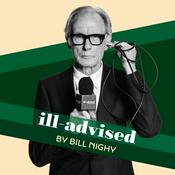Available Episodes
5 of 40
- Get Started: Climate Action in the built environment across AustraliaAcross Australia numerous groups are taking meaningful climate action and working hard to develop inspiring solutions. Today, I speak with representatives from five different organisations from the built environment to find out what’s happening. These groups tackle climate change from various angles, employing different structures and methods. They include formal committees, research groups, informal support and information sharing, and grass roots action. Today we’ll hear from: 1. The Australian Institute of Architects, Climate Action and Sustainability Committee – Andrew Noonan2. The Retrofit Lab, from the University of Melbourne – Professor Sarah Bell3. Australian Architects Declare – Steffen Welsch4. Parlour Regenerative Designers Annexe – Anna Lindstad5. Architects Climate Action Network, Australia – Lucy HumphreyMost of the groups I speak with today welcome all built environment professionals. And most importantly, they all provide free environmental information on their websites. Australian Architects can claim formal CPD hours the time they spend listening to the podcasts. MORE INFORMATIONFind everything you need on the Renovation Collaborative website. www.renovationcollaborative.com.auPODCASTKey points summary, timestamps and resource linksFREERESOURCESTranscript edited into clear Q&A.CPDAustralian architects can find more information on CPD, andCOURSESEleven easy to read courses demystifying the entire home design and construction process. INTERVIEW QUESTIONS[00:00:00] Introduction[00:01:43] AIA – Climate Action & Sustainability Committee – Andrew Noonan[00:02:19] What are the primary functions of the committee at State & National level?[00:05:24] What projects are you working on at the moment?[00:07:08] Can you tell us about the Embodied Carbon Curriculum?[00:09:43] How can architects get involved?[00:11:27] The Retrofit Lab, The University of Melbourne – Professor Sarah Bell[00:12:08] How did the Retrofit Lab get started?[00:14:13] Can you tell us about the Retrofit Lab and the work you do?[00:20:18] Tell us about your project investigating digital info for retrofit decisions?[00:23:53] Tell us about about your Climate Safe Rooms project?[00:26:42] How can we get involved and find out more?[00:28:29] Australian Architects Declare – Steffen Welsch[00:29:29] How did Architects Declare get started in Australia?[00:31:06] What are your primary aims?[00:31:44] How is it run?[00:33:49] How can architects get involved?[00:35:17] What campaigns are you working on?[00:39:35]...--------1:03:11
- Get Started: Reducing Embodied Carbon – Lucy Humphrey, Studio EcologyReducing embodied carbon in all new buildings and renovations is fast becoming a global priority, and in Australia new regulations are on the horizon. In today's episode, we move on to our final theme - Getting Started - and the first of two episodes to conclude the season.I talk with environmental architect, artist and well known Australian climate advocate Lucy Humphrey. Lucy is a director of the climate active architecture practice Studio Ecology, she teaches at the School of Architecture at the University of Sydney and the Sydney University of Technology and was a co-founder of the Australian branch of ACAN. Today, Lucy gives us a powerful wake up call about the current state of our planet. And she shares strategies to help us decarbonise our designs and meet our global targets, so together we can bring about change. We'll learn about: What's really happening to the planet and why change is urgent,The validity of climate emotionsAbout Life cycle carbon assessments and practical strategies to reduce embodied carbon.What's happening to the construction industry in Denmark where construction carbon caps are now mandatory, and alsoThe critical importance wholistic design thinking Australian Architects can claim formal CPD hours the time they spend listening to the podcasts. MORE INFORMATIONFind everything you need on the Renovation Collaborative website. www.renovationcollaborative.com.auPODCASTKey points summary, timestamps and resource linksFREERESOURCESTranscript edited into clear Q&A.CPDAustralian architects can find more information on CPD, andCOURSESEleven easy to read courses demystifying the entire home design and construction process. KEY POINTS SUMMARY[01:08:57] Stephanie: Today's summary only scratches the surface, and I found it very challenging to narrow down six key points. Lucy’s knowledge and passion are both inspiring and empowering so I recommend listening to the episode or reading the transcript.1. Climate emotions are valid and can include heavy feelings such as anger, isolation, grief and guilt. It's completely acceptable and healthy to take a step back and say, ‘No, I'm not engaging with this today.’ As an industry, we need to foster open conversations about this to enable everyone to embrace change. 2. Enable clients to make informed decisions about their home designs by sharing embodied carbon information and letting them decide. The best time to start talking about reducing embodied carbon is in the concept design stage at the very beginning of the project. This is when we have the most power to reduce carbon and all environmental impacts, because we can choose not to build, to reduce the size, we set the direction for the structural system and the form. Present...--------1:12:57
- Water & Ecosystems: Delight in your environment – Tim Bennetton, Tim Bennetton ArchitectsCareful consideration of water is now a critical part of design as we confront increasing floods and droughts due to climate change. In today's episode, we move on to our next sustainable design theme - Water and Ecosystems. We'll investigate the design of a small extension to an old timber home located in suburban subtropical Brisbane. This project has a very challenging site with overland flow and stormwater flooding issues. I talk with architect Tim Bennetton, the director of Tim Bennetton Architects, who will share the inside story on his Yeronga House project. Tim has successfully transformed this problem site into a valuable asset that not only brings joy to the homeowners, but also provides much needed habitat for local flora and fauna. Today we'll learn about: The importance of retaining stormwater and rainwater on site and appreciating water as a very valuable resource.Ideas that improve the resilience of cities to heavy rainfall and flooding, while also improving water quality and biodiversity, andWe'll also cover a wealth of other insights from Tim's years of experience. Australian Architects can claim formal CPD hours the time they spend listening to the podcasts. MORE INFORMATIONFind everything you need on the Renovation Collaborative website. www.renovationcollaborative.com.auPODCASTKey points summary, timestamps and resource linksFREE RESOURCESTranscript edited into clear Q&A.CPDAustralian architects can find more information on CPD, andCOURSESEleven easy to read courses demystifying the entire home design and construction process. KEY POINTS SUMMARY1. This site was affected by overland flow or water that runs or ponds on the site after rainfall. Overland flow may occur before the stormwater enters a creek, or when the stormwater leaves the creek as floodwater, or in some cases when stormwater rises to the surface naturally from underground. Overland flow typically occurs in natural low lying drainage paths. And as we discover today with good design, overland flow can become a positive asset because water is a valuable resource, particularly into the future as droughts increase. 2. Urban development in low lying stormwater flow channels leads to multiple problems such as: Increased flood levels, meaning that buildings take up space causing water to pile up, increasing flood depth and velocity, Reduction of natural absorption processes, meaning that a natural soft landscape of grasses, trees and other vegetation absorbs water and slows its movement, whereas hard surfaces and buildings prevent this from occurring, andIncreased impervious surfaces, meaning that urban built surfaces like concrete, asphalt and roofs cause rapid and increased runoff. When it reaches the local waterways. The additional fast forward moving water causes erosion of banks and destruction of waterway ecosystems.3. Sponge cities are urban areas designed to absorb,...--------48:04
- Healthy Buildings: Hempcrete and materials for a healthy home – Michael Leung, Balanced Earth ArchitectsPrioritising health when selecting materials and products is simply common sense, and the best thing about healthy materials – they are also brilliant for the environment. In today’s episode we move on to our next sustainable design theme – healthy buildings.We’ll investigate the design of a house on an off grid site located in Mullumbimby in the Subtropical northern New South Wales hinterland. I talk with architect, Michael Leung, the director of Balanced Earth Architects, who will share the inside story on his Sky Farm project. Today we’ll learn about:The key design considerations, materials and products for a healthy home,We talk further about the process, costs and benefits of using hempcrete in custom architectural construction, andWe’ll also cover a wealth of other insights and practical information drawn from Michael’s extensive experience as both an architect and a builder.Australian Architects can claim formal CPD hours for these podcasts. MORE INFORMATIONFind everything you need on the Renovation Collaborative website. www.renovationcollaborative.com.auPODCASTKey points summary, timestamps and resource linksFREERESOURCESTranscript edited into clear Q&A.CPDAustralian architects can find more information on CPD, andCOURSESEleven easy to read courses demystifying the entire home design and construction process. KEY POINTS SUMMARY1. Healthy building is about interrogating the detail of materials. Often that's not presented on websites and you have to dig deeper into the Material Safety Data sheets.After extensive research, Balanced Earth Architects now work with a simple palate of materials and the basics include: hempcrete, recycled timber and other materials from demolition, galvanised steel, timber windows, and natural finishes including clay and lime renders. 2. A hempcrete and lime rendered wall composition prevents mould growth. Hempcrete is vapour permeable, allowing moisture to travel from the inside to outside. In addition, lime render has an alkali surface preventing mould growth. 3. A hempcrete wall is set up as follows: It can be constructed on a timber framed or concrete floor.In timber framed construction, the joists or bearers may be doubled up to carry more load when the hemp is wet. Then a 10 or 20mm compressed FC board is fixed on top as a base for the hempcrete.To build the wall, a timber stud frame is setout 80mm in from the external wall line. The 90x45 stud sits centrally in the 250mm hempcrete wall, allowing 80mm of cover on both inside and outside.The entire house is constructed with standard timber stud frame construction. All timber can be untreated pine because the lime in the hempcrete protects the timber, andThe services are clipped into the stud wall, and...--------58:46
- Prefabrication: Structural Insulated Panels (SIPS) & Passivhaus – Murray Robertson, Robertson Architects NZSIPS, or structural insulated panels are a fast and efficient way to achieve very high thermal performance. In today's episode, we continue exploring prefabricated panel solutions. We investigate the design of a passive house built from SIPS on a very challenging site in the oceanic temperate climate of Wellington, in New Zealand. Architect Murray Robertson, the director of Robertson Architects, shares the inside story of his Bell House project. Today we'll explore the process, benefits and costs of SIPs and when they're an ideal solution.Australian Architects can claim formal CPD hours for these podcasts. MORE INFORMATIONFind everything you need on the Renovation Collaborative website. www.renovationcollaborative.com.auPODCASTKey points summary, timestamps and resource linksFREE RESOURCESTranscript edited into clear Q&A.CPDAustralian architects can find more information on CPD, andCOURSESEleven easy to read courses demystifying the entire home design and construction process. KEY POINTS SUMMARY1. Structural insulated panels or SIPs are used in floors, walls and roofs for residential and light commercial buildings. The panels are made by sandwiching a core of rigid foam plastic insulation between two structural facings and in this case Murray used oriented strandboard (OSB). SIPS are manufactured off site and are custom designed for each project. 2. SIPs panels do have some timber framing in them, but much less than a standard timber stud wall. The reduced timber content plus the polyurethane insulation deliver better thermal performance than standard insulated timber frame construction. 3. The external wall composition of this project was as follows:The basic external shell was a 165 mm thick SIPS panel.Externally, the ProClima weathertight membrane was fixed directly to the SIPS board and a 45x45 timber structural cavity batten attached to the outside of the membrane for the external cladding, andInternally, 45 x 45 timber battens were fixed to the SIPs, creating space for services, additional insulation and attachment for internal plasterboard lining.4. Internally, the oriented strandboard lining can be exposed rather than covered with plasterboard to save costs, but this approach makes access to services much more challenging. Additionally, since the strandboard wall serves as the finished surface, it requires protection during construction. 5. SIPS are very airtight, making them very appealing for use in Passive House projects. Only the joints in the very large SIPS panels require taping. And finally, 6. Important design considerations when using SIPs include:Lintels above doors and windows cannot be concealed within the ceiling, meaning that floor to ceiling glazing is not possible, andSIPS roof panels stop at the wall line resulting in no eaves overhang. Therefore, a custom solution to attach eaves is...--------35:42
More Arts podcasts
Trending Arts podcasts
About Renovation Collaborative
Highly respected Australian residential architect Stephanie Skyring interviews industry experts to share the latest environmentally sustainable home design ideas, products and materials.
Each podcast season demystifies a specific topic. Episodes are released weekly on Tuesdays.
Australian Architects can claim their formal CPD hours for listening to the podcasts and completing an online quiz. Find out more at www.renovationcollaborative.com.au
Podcast websiteListen to Renovation Collaborative, Jane Austen's Paper Trail and many other podcasts from around the world with the radio.net app

Get the free radio.net app
- Stations and podcasts to bookmark
- Stream via Wi-Fi or Bluetooth
- Supports Carplay & Android Auto
- Many other app features
Get the free radio.net app
- Stations and podcasts to bookmark
- Stream via Wi-Fi or Bluetooth
- Supports Carplay & Android Auto
- Many other app features


Renovation Collaborative
Scan code,
download the app,
start listening.
download the app,
start listening.


































